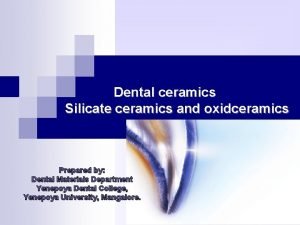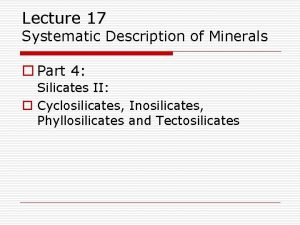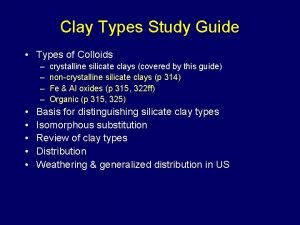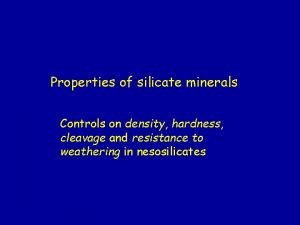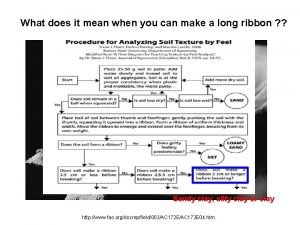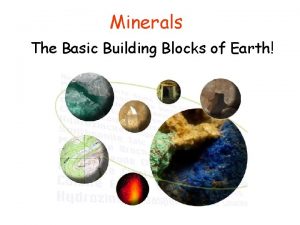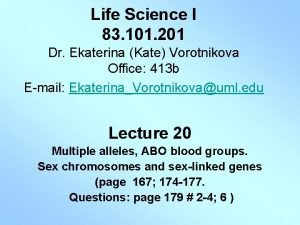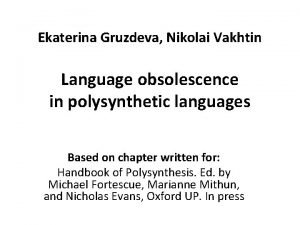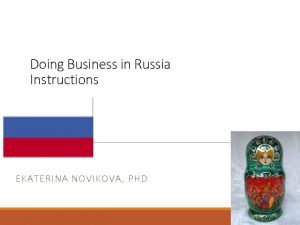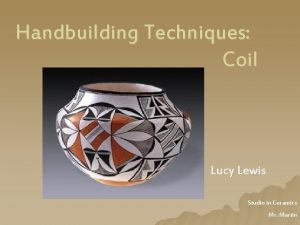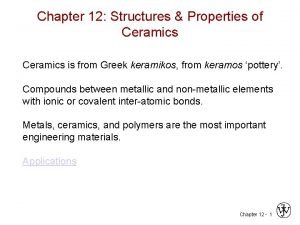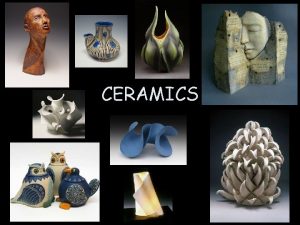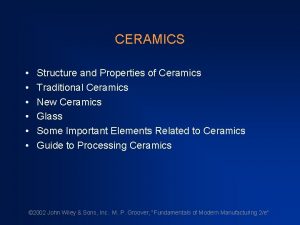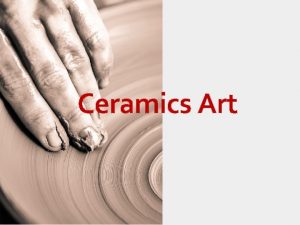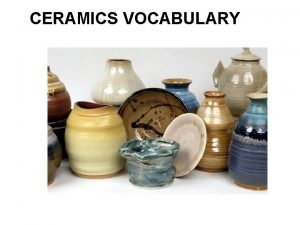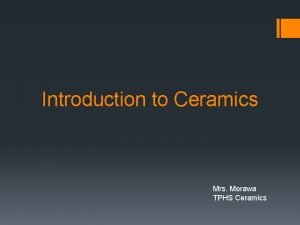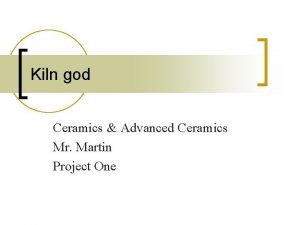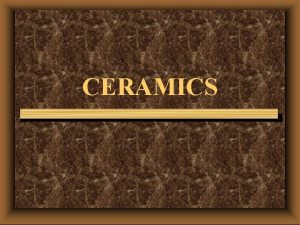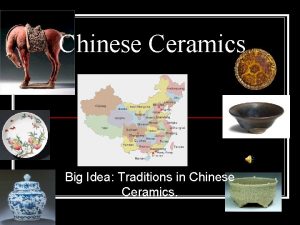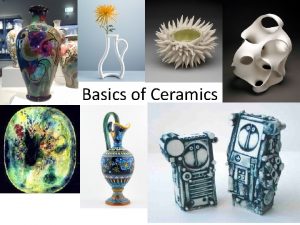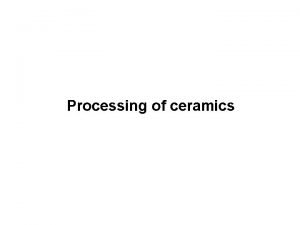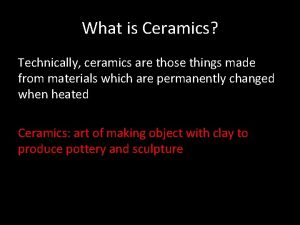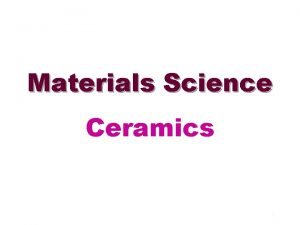Ceramics Kulinich Ekaterina Ph D Chair of Silicate


















- Slides: 18

Ceramics Kulinich Ekaterina, Ph. D, Chair of Silicate Technology and Nanotechnology

Сeramics is an inorganic, non-metallic solid material prepared by the action of heat and next cooling. Ceramic materials have a crystalline or partly crystalline structure

Ceramic materials are brittle, hard, strong in compression, weak in shearing and tension

Ceramics in general stable in very high temperatures (from 1, 000°C to 1, 600°C).

Traditional ceramic raw materials include: -clay minerals (kaolinite) -aluminiumoxide (feldspare) -silica (sand)

The word "ceramic" comes from the Greek word κεραμικός (keramikos) meaning pottery -domestic -industrial -building -technical -art objects

Types of ceramic products (4 groups: ) n n Structural ceramics (bricks, pipes, floor and roof tiles Refractories ceramics (kiln linings, fire radiants, steel and glass making crucibles) Whitewares (tableware, wall tiles, pottery products, and sanitary ware) Technical Ceramics (Space Shuttle program, ballistic protection, nuclear fuel pellets, bio-medical implants, blades, and bombs)

Whiteware ceramics n Bone china calcined cattle bone (bone ash) Characteristics: high whiteness, translucency and strength

n n Production of bone china usually involves a two stages: firing of bisque (items without a glaze) at the temperature 1280 °C glaze (glost) fired at a lower temperature (below 1080 °C)

n Earthenware 25% clay, 28% kaolin, 32% quartz, 15% feldspar

n Porcelain is a ceramic material made by heating raw materials, generally including clay in the form of kaolin, in a kiln by the temperatures from 1, 200 °C to 1, 400 °C.

Classification of technical ceramics Oxides ceramics: alumina, zirconia n n Non-oxides ceramics: Carbides, borides, nitrides, silicides Composites: сombinations of oxides and non-oxides.

Other applications of ceramics knives

Ball bearings n Ceramic balls can be used to replace steel in ball bearings

ceramic engine (which can run at a temperature of over 3300°C)

Bio-ceramics -dental implants -synthetic bones - coatings - bone fillers

Main objects n n Definition of ceramics History of ceramics Types of ceramics Using of ceramics

Thank you for your attention
 Colour 050466
Colour 050466 Silicate ceramics dental
Silicate ceramics dental Opx
Opx Zinc ethyl silicate primer
Zinc ethyl silicate primer Crystalline silicate clays
Crystalline silicate clays Silicate hardness
Silicate hardness Is muscovite a silicate
Is muscovite a silicate Pictures of flint
Pictures of flint Silicate minerals in mohs scale
Silicate minerals in mohs scale The building block of the silicate minerals is _____.
The building block of the silicate minerals is _____. Ekaterina paramonova
Ekaterina paramonova Ekaterina kashirskaya
Ekaterina kashirskaya Ekaterina novikova sex
Ekaterina novikova sex Irina sevidova ok ru
Irina sevidova ok ru Ekaterina gruzdeva
Ekaterina gruzdeva Ekaterina novikova erome
Ekaterina novikova erome Ekaterina sugak
Ekaterina sugak Hand building ceramics definition
Hand building ceramics definition Rcation/ranion
Rcation/ranion

